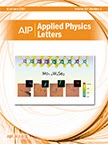Hi Achieve " Altering surface textures in 'counter intuitive manner' may lead to cooling efficiency gains."
.jpg)
Uncovering the physical secrets underlying surface phenomena may increase cooling efficiency for a wide range of applications, according to MIT and Boston University researchers
WASHINGTON, D.C. Nov. 12, 2013 -- Researchers across the globe are racing to find ways to improve the cooling of hot surfaces -- for technologies ranging from small handheld electronics all the way to industrial-sized applications such as nuclear power plants.
By zeroing in on the physics at play underlying surface phenomena, a team of Massachusetts Institute of Technology (MIT) and Boston University researchers made a significant breakthrough. Although somewhat counter-intuitive, they discovered that by creating sparsely packed textures on surfaces rather than densely packed ones, they were able to hold droplets in place and enable cooling.
Their findings, described in Applied Physics Letters, which is produced by AIP Publishing, have the potential to enabling cooling efficiency gains in a wide variety of applications.
Worldwide, nearly 86 percent of our energy is currently derived from steam cycles. "If we're able to improve this efficiency by even 1 percent and deploy it to all of the power plants, it could have a significant impact," explains Kripa K. Varanasi, Doherty Chair in Ocean Utilization, as well as an associate professor of mechanical engineering at MIT.
Varanasi's lab is known for tailoring or modifying surfaces to significantly improve efficiency. One of their recent creations was a slippery surface coating, which is now being commercialized by a spinoff called Liqui Glide. They're commercializing a container liner that makes toothpaste and other difficult-to-remove products, such as ketchup, slide right out of their tubes and containers -- greatly reducing waste.
For this particular study, the goal was the exact opposite of creating slippery surfaces. The researchers wanted to make liquid come into direct contact with hot surfaces so cooling could occur. They began by exploring the physics of surface phenomena, because whether focusing on mass transfer, momentum transfer, energy transfer, or charge transfer, the commonality is that the transfer occurs on a surface.
Water Droplets (1 of 2)

Image Caption: These are micro graphs showing water droplets landing on specially designed silicon surfaces (top images) at different temperatures. At higher temperatures, the droplets begin to exhibit a new behavior: instead of boiling, they bounce on a layer of vapor, never really wetting and cooling the surface. At 400 C, the droplet continues to boil only on the surface that combines micro-scale posts with a coating of nano scale particles (last column). These results demonstrate that this micro nano surface can be effectively cooled even at high temperatures.
"Vapor films are created beneath the droplets, which is a critical problem in boiling. Once the vapor films start forming, they act as a barrier to heat transfer because vapor has a lower thermal conductivity than liquid," Varanasi says.
In boiling, ideally the liquid will make contact with the solid. But this phenomenon has a certain threshold known as a "critical heat flux" -- once it's reached, a catastrophic event may occur. For example, in the absence of cooling fluid during an emergency situation in a nuclear power plant, a nuclear fuel rod's surface can become very hot. Pouring water on it to attempt to cool it results in the formation of a vapor film that actually interferes with cooling. As a result, droplets float on the hot surface, which is known as the "Leiden-frost effect."
To overcome the vapor film issue, Varanasi and colleagues textured surfaces using sparsely packed micron-scale structures coated with nano particles to create a capillary attraction effect to hold droplets in place.
"Vapor that forms as the evaporation of the droplet is able to escape through the surface texture," Varanasi explains. "Interestingly, there are two simultaneous competing forces occurring in this situation. As the vapor forms, it exerts an upward force on these droplets. And the texture pulls on the droplet with capillary attraction. This allows the liquid to come into contact with the surface and cool it."
They can engineer similar structures using a variety of materials and techniques, according to Varanasi. Right now, the team's focus is on exploring the energy, water and agriculture nexus because it's all interrelated. "We're hoping in our own humble way -- since many phenomena occur upon surfaces -- to improve them and enable big efficiency in this nexus," he says.
Key markets that may benefit from greater cooling efficiency gains include, but aren't limited to, nuclear power plants, semiconductors and electronics, oil and gas, fire suppression, desalinization, and metallurgy.
Water Droplets (2 of 2)
Image Caption: These images show droplets being deposited on silicon surfaces that are smooth (top) and that have micro-scale silicon posts placed either close together (middle) or relatively far apart (bottom). At 270ºC (left), droplets land and boil on all three surfaces—behavior conducive to efficient cooling. But at 300ºC, they boil only on the surface with the widely spaced posts. On the other surfaces, they bounce on a layer of vapor.
The paper, "Increasing Leidenfrost point using micro-nano hierarchical surface structures" by Hyuk-min Kwon , James C. Bird and Kripa K. Varanasi appears in the journal Applied Physics Letters. See link: To view link click here or the image below.
ABOUT THE JOURNAL
Applied Physics Letters features concise, rapid reports on significant new findings in applied physics. The journal covers new experimental and theoretical research on applications of physics phenomena related to all branches of science, engineering, and modern technology. See link: To view link click here or image below.









